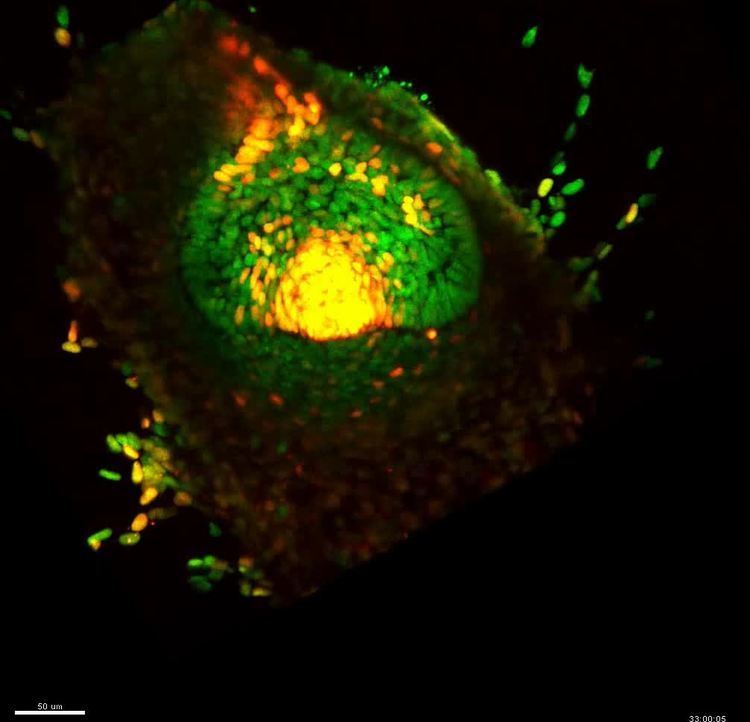 | ||
Tooth development or odontogenesis is the process in which teeth develop and grow into the mouth. Tooth development varies among species.
Contents
Fish
In fish, Hox gene expression regulates mechanisms for tooth initiation.
However, sharks continuously produce new teeth throughout their lives via a drastically different mechanism. Shark teeth form from modified scales near the tongue and move outward on the jaw in rows until they are eventually dislodged. Their scales, called dermal denticles, and teeth are homologous organs.
Mammals
Generally, tooth development in non-human mammals is similar to human tooth development. The variations usually lie in the morphology, number, development timeline, and types of teeth. However, some mammals' teeth do develop differently than humans'.
In mice, WNT signals are required for the initiation of tooth development. Rodents' teeth continually grow, forcing them to wear down their teeth by gnawing on various materials. If rodents are prevented from gnawing, their teeth eventually puncture the roofs of their mouths. In addition, rodent incisors consist of two halves, known as the crown and root analogues. The labial half is made of enamel and resembles a crown, while the lingual half is made of dentin and resembles a root. The mineral distribution in rodent enamel is different from that of monkeys, dogs, pigs, and humans.
In horse teeth, enamel and dentin layers are intertwined, which increases the strength and decreases the wear rate of the teeth. Contrary to popular belief, horse teeth do not "grow" indefinitely. Rather, existing tooth erupts from below the gumline. Horses start to "run out" of erupting tooth in their early 30's and in the rare case they live long enough, the roots of their teeth will fall out completely in the middle to latter part of their third decade.
In manatees, mandibular molars develop separately from the jaw and are encased in a bony shell separated by soft tissue. This also occurs in elephants' successional teeth, which erupt to replace worn teeth.
All members of the order Tubulidentata have no incisors or canines, their teeth have no enamel, and their molars grow continuously from the root.
Invertebrate "teeth"
True teeth are unique to vertebrates, although some invertebrates have analogous structures sometimes called "teeth". The organism with the simplest genome bearing such "teeth" is probably the worm genus Ancylostoma (Ancylostoma duodenale, Necator americanus). Molluscs have a structure called a radula which bears a ribbon of chitinous "teeth". However, these are histologically and developmentally different from vertebrate teeth, and are unlikely to be homologous. For example, vertebrate teeth develop from a neural crest mesenchyme-derived dental papilla, and the neural crest is specific to vertebrates, as are tissues such as enamel.
